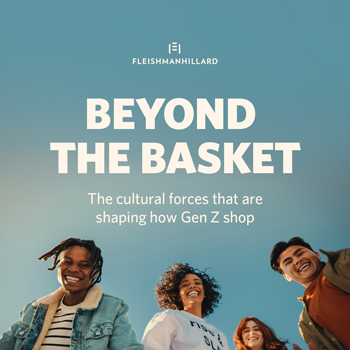Stats vs. Stories: The secret sauce that makes content marketing click
Do you watch the news regularly? Have you noticed anything different about the way the latest on the pandemic is being broadcast?
Let me take you back over the past 12 months. First came increasing caution, fear and grief. The first few domestic cases, hundreds being admitted to hospital, thousands mourning loved ones and many more suffering long Covid.
Hot on its heels, the counter-story. The thousands made redundant, the millions on furlough, the billions spent on economic support.
Then came hope. The vaccine efficacy rates, the first vaccination, the millionth vaccination, hundreds of businesses adapting and reopening, thousands of workers relocating to work remotely.
These are what they seem. Endless statistics fighting each other for attention, resetting the scale of magnitude each time they are delivered.
And because statistics, after a time, begin to lose meaning with a saturated public, the way the story is delivered begins to evolve.
Here’s the typical cycle: a story breaks with raw information – what is happening and where, but over time the storyteller moves to the ‘who’ and ‘how’. And then a new story breaks.
In the context of the pandemic, we’re into the ‘who’ and ‘how’. It’s no longer about the first Moderna jab, but Elle from Carmarthen, about who had it.
Not about businesses reopening but the barber who cut the first haircut. The landlord that poured the first pint.
Soon we’ll hear from real holiday makers boarding planes to Greece, and fans attending live sports matches. We’ll hear about their anguish, fears and hopes.
The ‘what’ piques our interest, but it is the ‘who’ that makes it personal and draws lasting attention. One will always lead to the other, and so journalists will provide stats and stories. If that’s what it takes, surely brands can be producers and publishers too?
How brands can address issues with content
Content marketing has always been about two things: marketing with content or marketing the content.
The former shifts products, the latter shifts opinions.
Content marketing doesn’t have to sell something. Sometimes you’re just selling an idea, sharing a belief or even dispelling a mistruth.
When it comes to managing an industry’s, a brand’s or a product’s reputation, this is often everything.
Content in the right place – particularly real, emotive stories – are incredibly persuasive. Just ask The Daily Mail how empathy drives clicks.
“Content marketing has always been about two things: marketing with content or marketing the content.”
Without a platform, brands can’t rely on content alone.
Unsurprisingly, brands need to work harder than mainstream media to draw and keep attention.
Tailored research will identify the correct audience for your issue, where to find them and what messages they will react to. What you do next, though, is vital.
If you’re expecting to be read, watched and heard in the same social feeds, the same online context as consumer media, your content is going to have to be every bit as good as theirs.
And your marketing as effective at disrupting and keeping your attention as that advert you keep seeing in banner displays or on your YouTube feed.
Content marketing is a process, a process that can be effective when it comes to shaping opinions on key issues. But it’s also an art form only achieved with a blend of two very different skills.
Content must be shaped and nurtured by expert storytellers, while marketing must be done by genuine marketers.
Put the right end-to-end process with the right skills and you’ve got every chance of really engaging with your audience and shaping lasting change.
Peter Wilson, Head of Special Campaigns
Find Out More
-
Achieving Outsized Impact by Building Stronger Country Reputation
February 18, 2025



